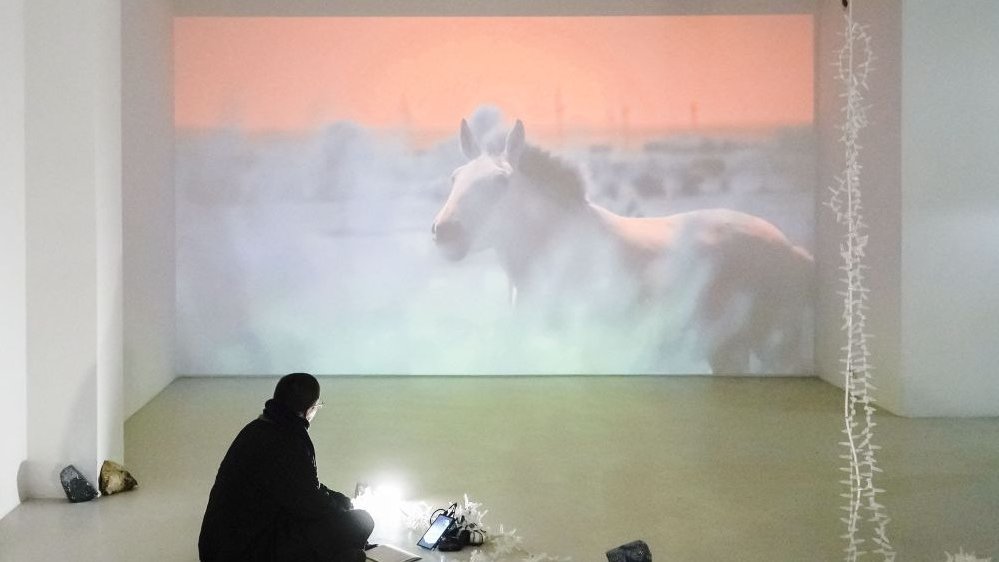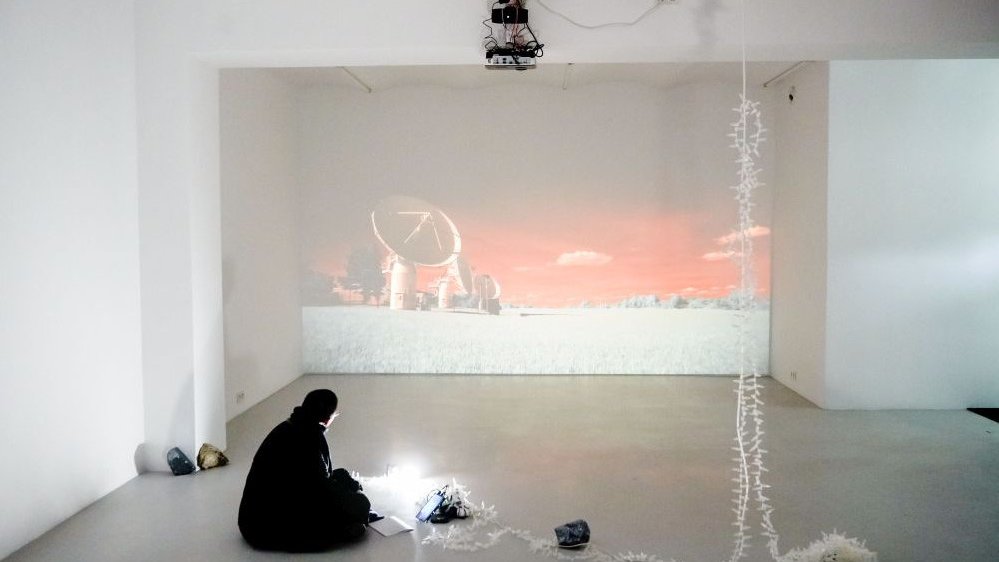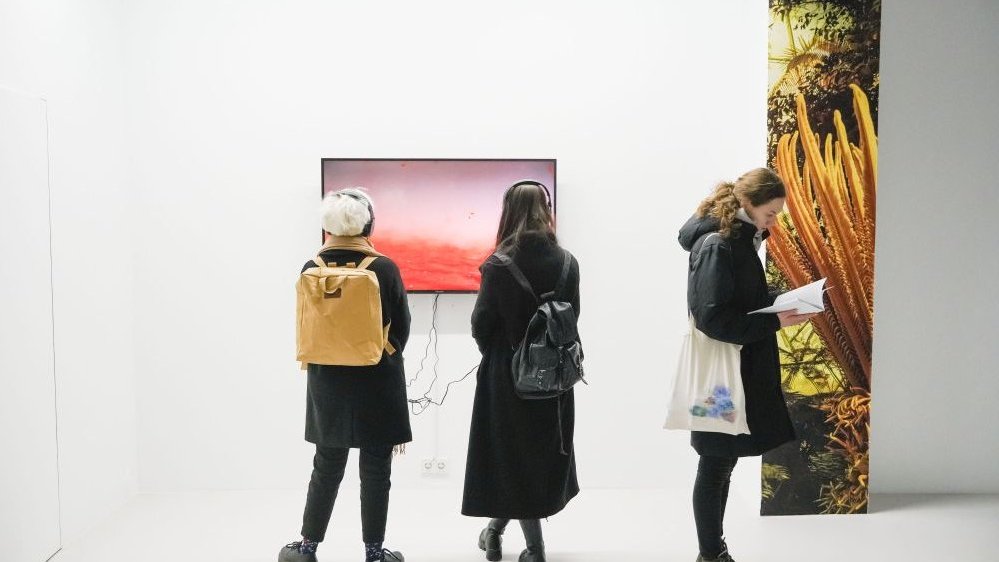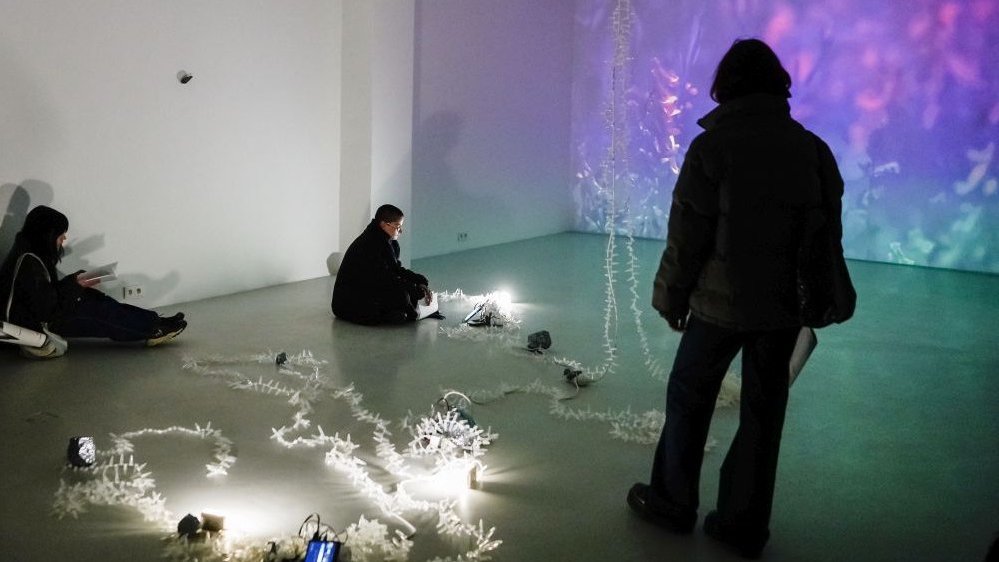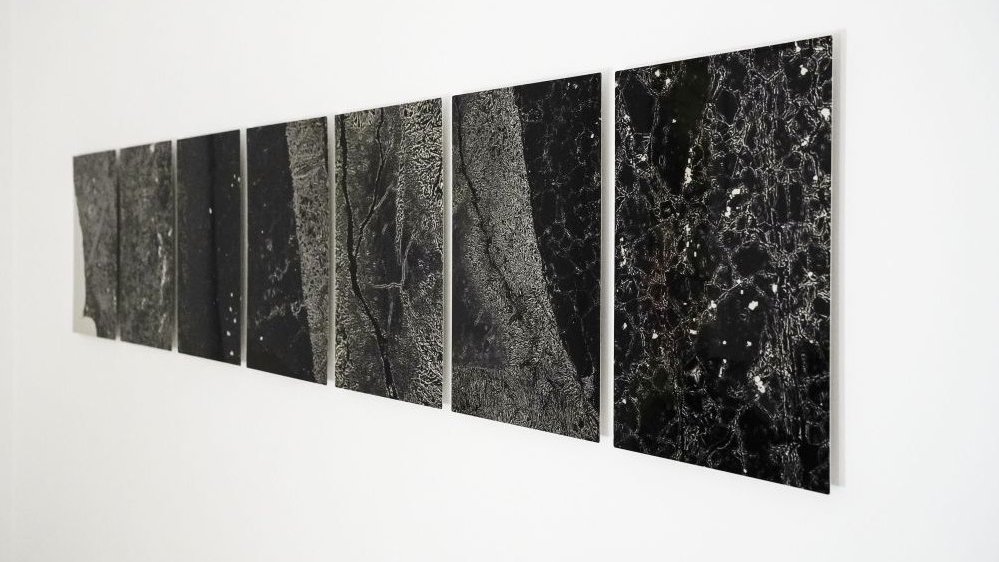Laboratory of the future

On display in the SKALA Gallery, Wilson's project manoeuvres between the things that used to be, are and will be there. His works should in fact be seen as an interdisciplinary project that expands far beyond the artistic undertaking placed in the gallery's white cube space.
The exhibition revolves around the eponymous experimental 2017 film Geological Evidence shot in the German town of Schöningen. It is set at a double excavation site made up of an archaeological dig where hunting and food gathering tools of human ancestors were discovered, and an open-pit lignite mine currently slated for shutdown. This clash of prehistory and the present inspired the artist. "We burn to stay alive. We burn calories, which are units of heat used to gauge the energy contained in food, and we also burn coal. The internal combustion engine is a disembodied stomach. There is a scale shift between an organism that digests the flesh of another animal and a society that digests the energy locked in the Earth," he observes.
The film was shot with an amateur camera through a near-infrared filter. The choice of filter was a deliberate aesthetic device selected for the features of infrared radiation, originally dubbed "caloric rays", of being invisible to the human eye and useful for detecting thermal energy. As a result, Wilson's works were rendered in a distinctive plait of intertwining burnt orange and green. In an interview given to Caroline A. Jones, Wilson emphasised that his goal was to present a moving image that lays bare the majesty of the land. Static poetic frames of an apocalyptic non-human landscape interweave with grass-blade and insect close-ups. "We used to burn to live and now live to burn. For almost 250 years, the ever-increasing population of industrialised people hurtles through modernity driven by the energy of fossil fuels as if there is no tomorrow. New fuels, a new metabolism. Not coincidentally, no people appear in the film", he notes in a description of his work.
"Material witnesses" (a term borrowed by Wilson from Susan Schuppli) record events from the past. The artist's primary aim was to portray the earth's atmosphere as a "modern archaeological artefact" that will become research material in future millennia. The artist imagined searching for remnants of industrialised human society in a distant future and, to use his own words, "concluded that one of the main archaeological sites researched to explore today's modernity would not be below but rather above ground, in the poisoned atmosphere of the earth."
The exhibition comes with an article by its curator, Arkadiusz Półtorak, first published in Czas Kultury. Półtorak examined the film in light of Viktor Shklovsky's defamiliarisation theory whereby the alienation and estrangement of expression prolongs the perceptual process allowing one to get to know an image thoroughly rather than just seeing it. The approach corresponds with the position of Wilson, who reflects on environmental disasters and does not think in terms of agency, but rather of a continuum of sorts. He believes that disasters should be seen as triggers that set processes in motion. From our perspective, however, it is impossible to fully know and understand them.
The film comes is accompanied by other works, such as Factitous Earths, Factitous Reservoirs and Factitous Flora, which Półtorak describes as referring to science and future. They are fantasies that portray the planet as being geochemically transformed and attempts to depict gardening reliant on AI, synthetic biology, and extra-terrestrial crops. The confined spaces of the SKALA Gallery have been taken over by out-of-this-world entities, and site-specific installations reminiscent of ominous science fiction worlds that connect the past and future. These unrecognised objects that are foreign to our perception confuse and distress us all the while intriguing us to learn more about Wilson's visions, each of which contains one unique element or another.
Wilson's works are engaging both visually and physically. They are immersive, encouraging "a deep dive", and hard to ignore. The display is a collection of artifacts from the laboratory of the future, a speculation on what life may be like someday, a reflection on a non-human world where relationships are unlike any known to us today. Finally, it prompts us to embark on an intellectual journey, use one's imagination and practice defamiliarisation of what remains unknown.
Klaudia Strzyżewska
translation: Krzysztof Kotkowski
Exhibition: Geological Evidence
Matthew C. Wilson
Curated by Arkadiusz Półtorak
SKALA Gallery
Open until 3 February 2023
© Wydawnictwo Miejskie Posnania 2022
See more

From One Celebration to Another

Christmas Markets and Fairs with Attractions

Truly Festive Vibes

